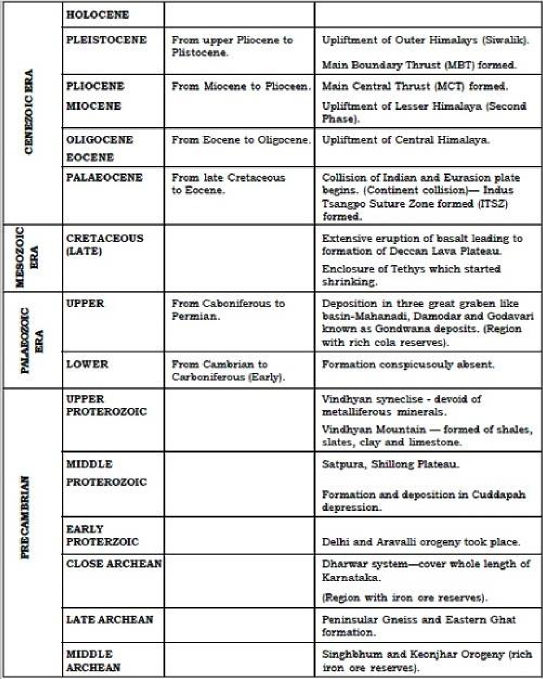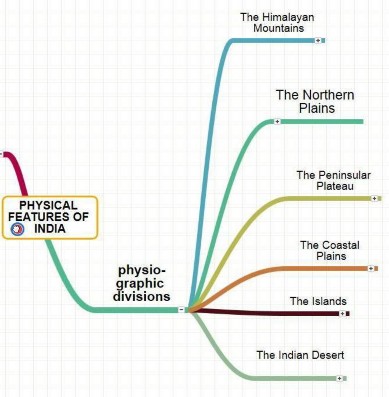Figure 7 – The great plains of India

3. Physiography
Table 1 – Geological Time Scale of India
‘Physiography’ deals with the study of the surface features and landforms of the earth. It is the outcome of structure, process and the stage of development. There are significant variations among the different regions of India in terms of their geological structure. The relief and physiography of India has been greatly influenced by the geological and geomorphological processes active in the Indian subcontinent. The land of India is characterized by great diversity in its physical features. The north has a vast expanse of rugged topography consisting of a series of mountain ranges with varied peaks, beautiful valleys and deep gorges. The south consists of stable table land with highly dissected plateaus, denuded rocks and developed series of scarps. In between these two lies the vast north Indian plain. Based on these macro variations, India can be divided into the six physiographic divisions as shown in figure 8.

